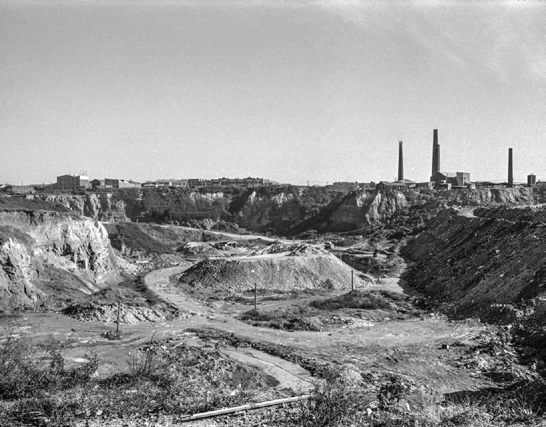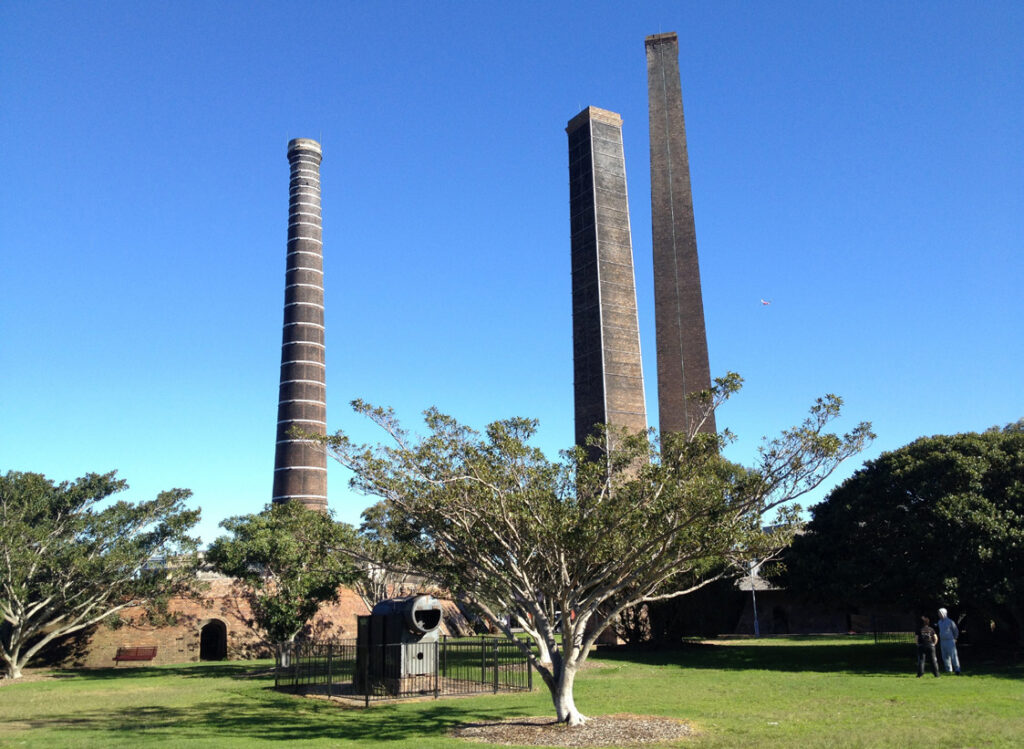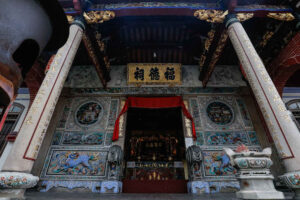Asian Network of Industrial Heritage: Sixth Issue Bulletin / June 2021, p33 to 37
Peter Romey ( Deputy Chair, AusHeritage)
In recent decades there has been an increasing interest in industrial heritage, and more specifically the adaptation of redundant industrial sites for new uses. Australia is no exception, and our country has a rich heritage of industrial places, despite our long reputation of relying on our pastoral industry which gave Australia one of the highest living standards in the world (known as ‘riding on the sheep’s back’).
The International Committee for the Conservation of the Industrial Heritage (TICCIH), is the world organization for industrial heritage. It was established in 1973, and its goals are ‘to promote international cooperation in preserving, conserving, investigating, documenting, researching, interpreting, and advancing education of the industrial heritage’. The International Council on Monuments and Sites (ICOMOS) recognises TICCIH as a designated consultant in all matters related to the study and preservation of industrial heritage.
Australia ICOMOS established a National Scientific Committee on Industrial Heritage (NSC-IH) in 2018 ‘to be a voice for industrial heritage advocating for the preservation, conservation, investigation, documentation, research and interpretation of our industrial heritage’. So, industrial heritage, especially the process for finding opportunities for the meaningful reuse of redundant industrial sites, is a subject of considerable interest in Australia.
In this article I will briefly discuss a number of redundant industrial sites have been adapted for a new use as urban parklands. What is particularly interesting about these sites is that they have become successful and highly valued places for passive outdoor leisure, a dramatic contrast with their original industrial use which equated with hard work, pollution, dirt and the exploitation of lowly paid workers.
Many former industrial sites have been redeveloped for new uses that retain a measure of economic viability, including housing, commercial offices, retail, light industry or even performance spaces or museums (or as combinations of the above). However, in some cases, and for a range of reasons, these options may not be viable.
A common deterrent to the redevelopment of redundant industrial sites is contamination that can not be entirely mitigated, and so needs to be left undisturbed and possibly sealed. Some sites may have been been used for rubbish disposal, and this was a common second phase of landuse for brickworks, where the pit left behind when the clay was exhausted is progressively filled with household and industrial waste. The resulting unstable ground conditions preclude the redevelopment of these sites for new construction.
Finally, although Australia is a very large country of 7.7 million km2 and with a relatively small population of 25 million, it is one of the most urbanised countries in the world. Many of our older redundant industrial sites are located in densely populated inner city areas that lack adequate passive open space. Local communities have been very effective in pressuring governments to exploit the potential of these sites as industrial parklands rather than for more intensive development.
Interestingly, there was initially a widespread reluctance by local communities to recognise the cultural heritage values of the remnant industrial structures. The open space potential was appreciated, but the structures were seen as the physical reminders of dirty and polluting industries rather than as parts of our heritage that should be conserved. Over time these attitudes have evolved, as has an appreciation of the value of industrial heritage generally. Indeed, time has shown that these physical reminders of former industrial processes provide a character and identity to these urban parklands that are now much appreciated by their users.
Sydney Park
Sydney Park is in the inner suburb of St Peters, densely populated and just 5km south of the Sydney CBD. The area had been used for clay excavation and brick making since the 1870s, and the workers mostly lived in small houses near to their places of work. The several brickworks located on the 40ha site of what was to become Sydney Park began to close down in the second half of the 20th century as the clay reserves required for brickmaking were exhausted, and the vast pits were filled with household and industrial waste.
This use of the site as a waste dump finally ended in 1976, and the staged renewal of the site as a regional park began, a process that took several decades. Large amounts of soils (particularly clay) and building rubble were laid over the former rubbish dump to dramatically transform the topography and to seal the methane and other contaminants generated by decades of dumping waste material.
Today, Sydney Park includes a series of visually prominent hills which provide panoramic views of the city skyline and Sydney Airport. Stormwater detention ponds have been transformed into wetland habitat to partly recreate the pre-European environment, and the park is extremely popular and heavily used by the local community a wide range of activities, including events and festivals, public art displays, bike riding, dog walking, kite flying and sports including cricket and football.
Most importantly, and despite early reservations from the community and the government about the appropriateness of retaining tangible evidence of the former brickworks, the identity of Sydney Park today is inextricably linked to these chimneys and kilns, and is much valued as such by the community.
While Sydney Park is an early, and highly successful, example of the conversion of a redundant industrial site as an urban park, there are a number of more recent examples of this process.
Ballast Point Park
Ballast Point Park in the inner Sydney suburb of Birchgrove is a 2.8ha park located on the picturesque Parramatta River, only 2km to the west of Circular Quay. Until its closure in 2002, the site had been a fuel storage and oil distribution centre, dominated by large steel tanks. The headland’s natural landform had been radically reshaped over the previous decades and had been left honeycombed in response to its industrial uses.

The design approach to the project is described as: ‘The site’s industrial past became both an inspiration and a resource for the new park. Existing structures and materials have been kept on site and repurposed. Several large oil storage tanks remain in situ, and the footprint of removed oil tanks has been interpreted in the landscaping’ (Ballast Point Park, Walama, Birchgrove – NSW Government Architect).
Balls Head Coal Loader
A third example of successfully creating high quality urban parklands from a former industrial site is the 2.5ha Balls Head Coal Loader in Waverton, located on the north shore of the Parramatta River, also close to central Sydney.
The site is a former industrial complex that operated from the early 1920s to the early 1990s. It functioned primarily as a transfer depot for coal from bulk carriers to smaller coal-fired vessels. The coal loader operated for over 70 years before being decommissioned in 1992.

The site was dedicated as public open space in 1997, and was transformed in stages into an urban park and Centre for Sustainability between 2011 and 2018, while retaining the key tangible elements of its industrial past, including the main coal loader platform, coal chutes and the four vaulted tunnels that run underneath the platform. The project design approach as received wide acclaim:
‘The site is based on the idea of community, which is apt considering that the active local community managed to save it from the threat of commercial development’ (Architecture AU, March 2021).
There are many other examples of the successful conversion of former industrial sites into urban parklands, both in Australia and internationally. Although far from unique, these three case studies are nevertheless notable. They are located within densely populated inner city precincts, they are popular places for passive recreation in these precincts, and their transformations have retained tangible elements of their industrial past.
Ironically, it is the retention of these elements from an industrial past, evidence of lowly paid work, pollution and dirt, that provide their unique identity and character, and their popularity with their communities.
References
1. https://www.cityofsydney.nsw.gov.au/histories-local-parks-playgrounds/history-sydney-park
2. https://www.governmentarchitect.nsw.gov.au/resources/case-studies/2017/11/sydney-park
3. https://www.governmentarchitect.nsw.gov.au/resources/case-studies/2019/01/ballast-point-park-walama-birchgrove
4. https://www.northsydney.nsw.gov.au/Business_Projects/Public_Domain_Infrastructure/Coal_Loader_Platform_Green_Roof
5. https://www.cityofsydney.nsw.gov.au/parks/sydney-park
6. https://www.governmentarchitect.nsw.gov.au/resources/case-studies/2019/01/ballast-point-park-walama-birchgrove
7. https://www.northsydney.nsw.gov.au/Environment_Waste/The_Coal_Loader/About_the_Coal_Loader



